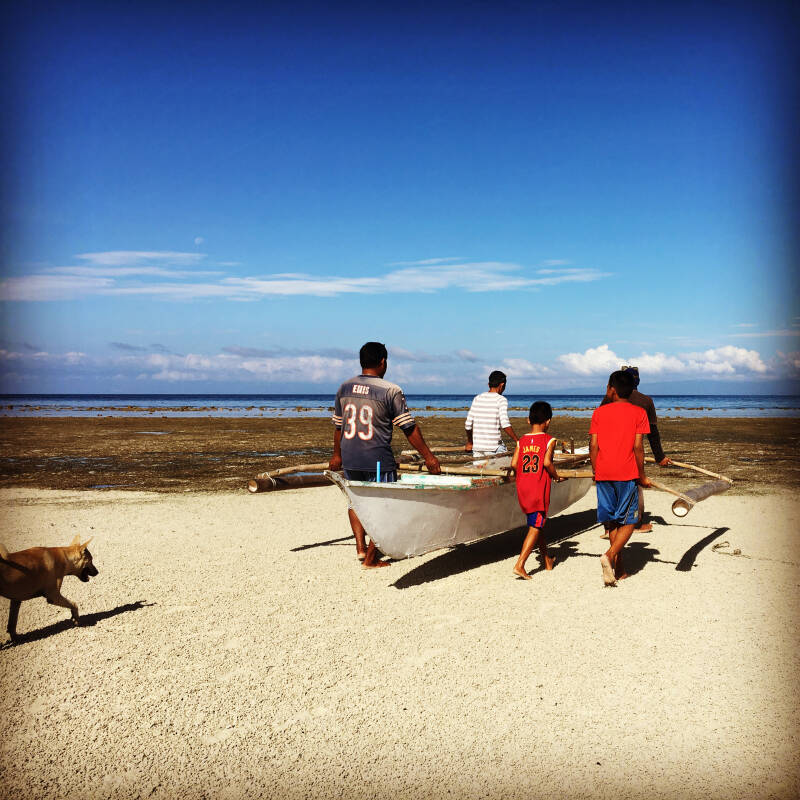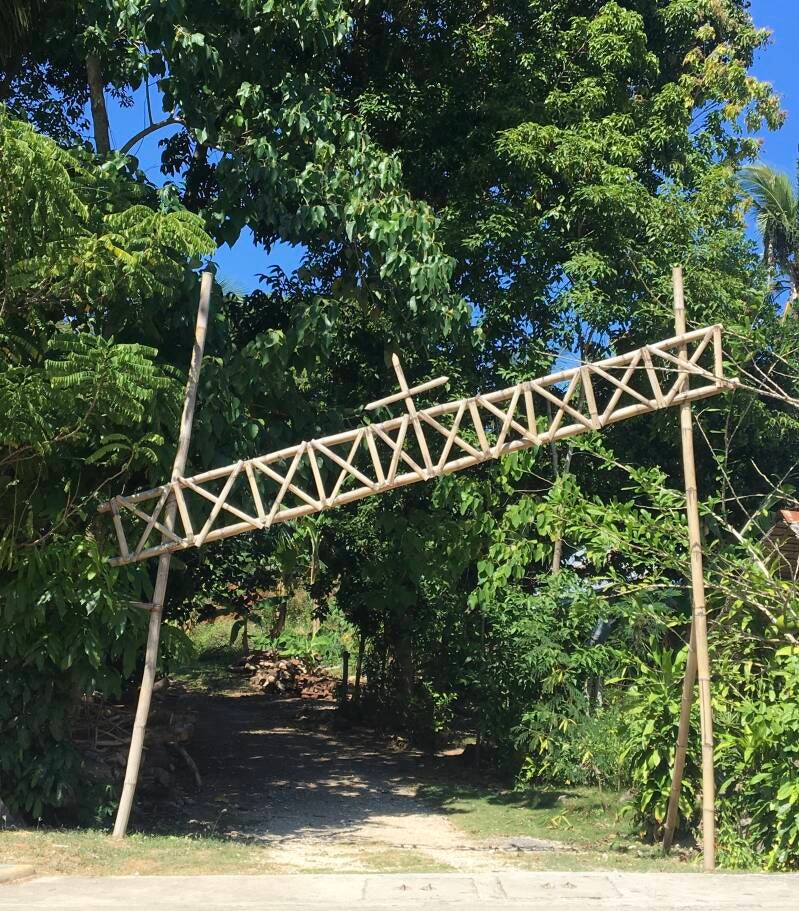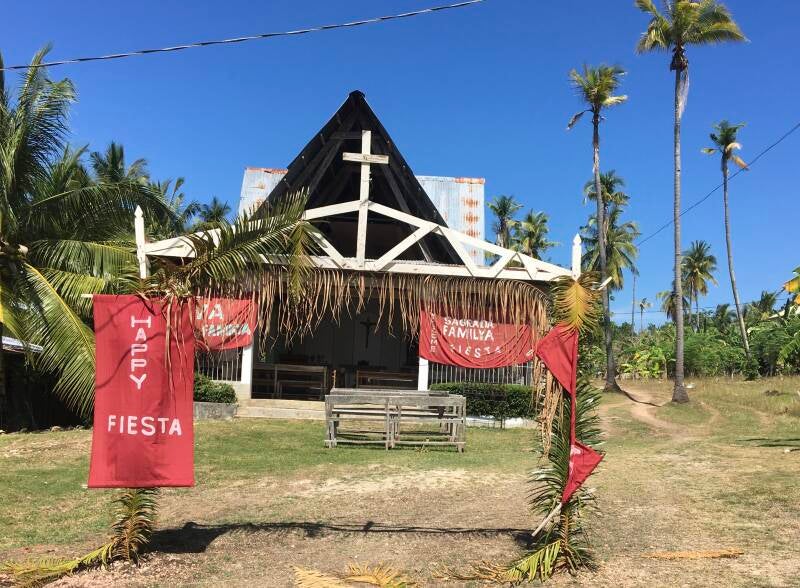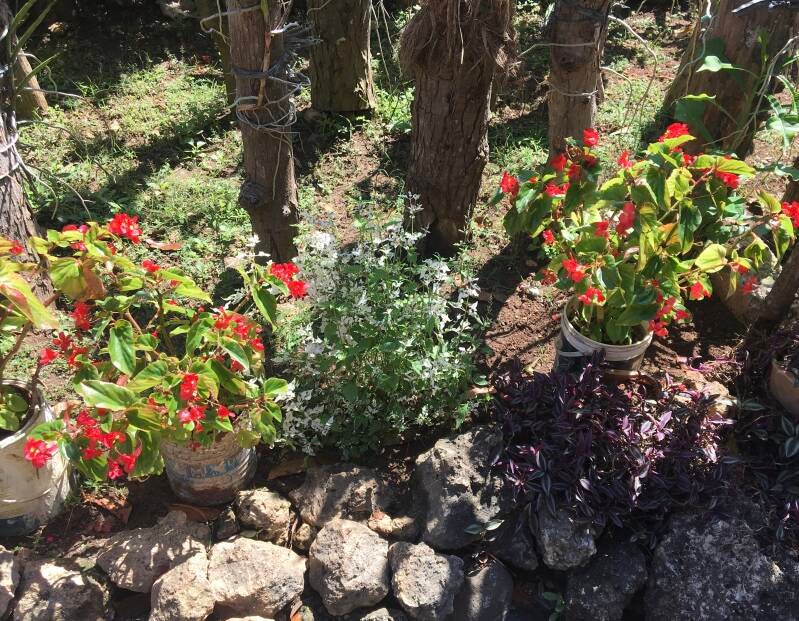
Sunset on Larena beach.
Always determined to prove others wrong, I was intent on showing that Manila had something special to offer rather than skipping it for beaches and islands like most travellers to the Philippines. I planned to spend only five days in this dense metropolis, reputed to have the worst traffic in the world and, according to many, not much else.
With my travel companion Andy, I uncovered a lively arts scene, explored a genuine 16th-century Spanish city, and mastered the skill of crossing Manila’s chaotic roads, sliding between cars, motorbikes and jeepneys that appear to have missed the concept of stopping for pedestrians. We rode in a tricycle sidecar, squeezed onto a ferry packed with laughing locals, wandered hidden backstreets, sampled fiery cocktails and street food, and when volcanic ash made the air unsafe, found refuge in vast shopping malls that could double as small cities.
An extra day in Manila was gifted to us when Taal Volcano erupted and grounded flights. By the time our new flight was confirmed, we were more than ready to reach the remote beaches of Siquijor. Andy wisely suggested allowing three hours to travel the seven kilometres to the airport. In most countries that would be a leisurely half hour. In Manila, where rush hour lasts four, it was a gamble.
So for the second morning in a row, we rose at 4 a.m. for a 5 a.m. departure. At the airport, travellers slept on every available surface, victims of the volcanic chaos. I counted myself lucky. Our high-rise accommodation was full of friendly English speakers, including a middle-aged woman who had alerted me to the eruption the day before, prompting us to check our flight status and avoid becoming part of the airport floor décor.

Flying over the Metropolis of Manila.

Goodbye Manila, hello islands.
The flight itself arrived in Dumagette twenty minutes early so there was barely time to lament the lack of free refreshments on this budget flight. My window seats afforded me picturesque views over the ocean so I spent most of the time snapping away at the rich turquoise oceans that metamorphosed out of the warm and muddy tones of the big city. A small airport, it took minimal time to exit the airport and then choose a tricycle and haggle for our price to the ferry terminal.

Attaching our luggage to the trike, Andy looking on.
For a country that seems relaxed about many rules and regulations that would be strictly followed in other countries (it seems anything goes in traffic, for example), there seems to be an oversupply of infrastructure around some transportation such as ferries.

Christmas tree made from reused water bottles at the Dumagette ferry terminal.

Nap time in a colourful trike at the Dumagette ferry station.
Despite having booked our ticket online we still were slugged a port tax and were also required to pay for luggage all paid for in separate queues with multiple security guards guiding you to which queue to line up for. All staff, however seemed to elevate the mundane elements of their day and my experience was to see many of them singing along to the oft played 70s pop music without embarrassment, even by themselves, and in smaller towns, always taking the time out to say hello or good morning, not expecting anything in return. After the equally fast ferry ride, it was another trike ride from the Siquijor pier to Larena, to where we were about to relax, snorkel, hike and enjoy a peaceful paradise for the next 2.5 days.

The walkway down to our beach and cabin at Casa Del Playa Resort.

Front view of our cabin.
Larena is a 5th class municipality of the island of Siquijor with a population of around 14,000 people. It was the former capital of the province of Siquijor. Siquijor was called the Island of fire by the Spaniards in the 1500s because of the fireflies that were known to light the island up. One of the smallest islands in the south, Siquijor is famous for its mountain-dwelling mangkululam (healers) who brew traditional ointments for modern ailments and being one of the best islands in the world for snorkelling.

View of the beach from our cabin.
We were warmly greeted at our resort, Casa Del Playa by the healthiest and fattest dogs we had seen for the whole of our stay. These dogs were well looked after by the resort unlike most of the wretched, starving and scarred dogs seen in Manila. Then we were escorted to our beach cabin which was directly opposite the beach and so close that the night tide actually came right up to our step and, with the open windows and no air conditioner, we drifted off to sleep to the sound of crashing waves. At one dreamy moment I imagined I was rocking in a boat, maybe a flashback from our ferry ride.

The view to the left of our cabin at Casa de la Playa and beach.
Upon arrival however, we couldn’t wait to swim in the sea, directly opposite our cabin, and although the tide was in, the water was mostly shallow so it was a long walk to find any depth; Andy put her snorkelling gear to good use; borrowing the mask for short swim, I witnessed a myriad of coral species, orange and black sea stars and stripey colourful fish.

The resident dog, perhaps the fattest, most pampered dog in the Philippines on Larena beach.

Clouds and very few tourists.

Typical display of the sky at dusk.

Another sunset view from our cabin.
On our second day in Larena, and after a glorious morning walk along the beach alongside hundreds of hermit crabs, I decided to explore the area on foot while Andy went on a snorkelling trip with our newfound friends next door, Evie and Emmie, of the successful travelblog Mumpacktravel.

A fishing family we met on our morning walk.
Walking the main road and then the back streets I noticed that most dwellings had no windows despite the evidence of trappings of modernity such as televisions inside. Upon arrival at Larena we had been indeed surprised to only find a single sheet on each bed; when we asked for a blanket, the staff seemed bemused but brought down an extra sheet each. Having previously resided in the air conditioned high rise comfort of Tivoli Gardens Residence in Manila, I wasn’t aware that it does not cool down at all at night in Siquijor, unlike Victoria’s beaches and therefore a sheet was all that was required, sometimes none at all.


Plenty of breeze brick patterns in beach houses.
Local tiki bar which advertises a Saturday disco.


The entrances to a local open sided church.

Church interior.
After following the main road that had led us to Casa Del Playa, I abandoned Google Maps in favour of a quiet side street. School was out, and children in bright uniforms drifted homeward, their shyness dissolving into laughter as they called out greetings. We exchanged names in a cheerful tangle of accents before parting ways. A little further on, I came upon one of the Philippines’ many open-sided churches, its stillness a gentle reprieve from the midday heat. As the traffic thinned, the road gave way to a slower rhythm: chickens, goats, and cows wandering freely among homes of every shape and size. Resourcefulness flourished here: paint tins, reborn as flower pots, lined verandas in a display of colour and quiet ingenuity.

Used paint buckets repurposed to house plants.

Lovely house with thatched roof.

Triangular chicken coops.

Traffic along the road to the sea.

Hammock time; note: rare pedicured feet.
Then it was back to our cabin on the beach to, well, swim some more, lie in the hammock and enjoy the changes in the beach sky thoughout the day until the consistently spectacular sunset occurred around 6pm every night. It felt like we owned the beach with fewer than ten tourists passing us from the various ‘resorts’ along the beach and only occasional locals and staff ‘cleaning’ the beach (which consisted of raking the mounds of seaweed every morning and collecting the minimal rubbish, fishing and boating. The main noise we experienced was from the noisy gecko in our roof that makes such as weird sound which starts off as a rattle and then a musical repetitive sound that does actually sound like ‘Gecko, Gecko, Gecko”. Whilst we didn't end up partaking of the mountain healers, our beach and surroundings were healing enough. We could get used to this.



Create Your Own Website With Webador